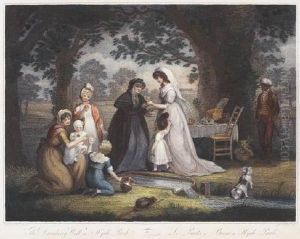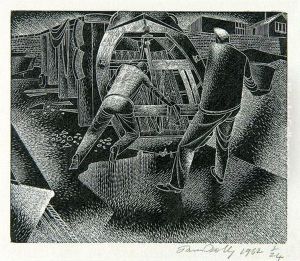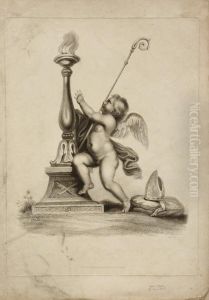James Godby Paintings
James Godby was a British engraver and painter born in 1784. Not much is publicly known about his early life and training, which is common for many artists of his era, but he is recognized for his contributions to the art of engraving and miniature painting in the late 18th and early 19th centuries. Godby worked during a period when the popularity of printmaking and engraving was at a high point in Britain, bolstered by a growing middle class who desired artworks but could not always afford original paintings.
Godby's career is marked by his association with prominent figures and institutions of his time. He produced works for the Boydell Shakespeare Gallery, which was an ambitious project to create a series of prints based on William Shakespeare's plays. He also worked on engravings for the 'Historic Gallery' and contributed to the illustration of books, such as Dr. Thornton's 'Temple of Flora' which included a series of plates depicting various plants and flowers. His work in these projects reflects the era's fascination with literature, history, and natural science.
James Godby's engravings are characterized by their fine detail and precision, which was a hallmark of the printmaking craft during this period. He was able to capture the essence of the original paintings he was translating into prints, often adding his own touch to the final product. This ability made him a sought-after engraver for book illustrations and standalone works of art.
Despite his contributions to the art of engraving, James Godby's name is not as widely recognized today as some of his contemporaries. The nature of printmaking as a reproductive art has historically led to engravers being overshadowed by the artists of the original works they reproduced. Nevertheless, Godby's prints remain valuable to art historians and collectors for their craftsmanship and as a reflection of the artistic and cultural interests of the Georgian era in Britain.
James Godby died in 1845, leaving behind a body of work that continues to be appreciated for its technical skill and representation of British artistic endeavors during a rich cultural period. His engravings, although perhaps not as celebrated as those by some of his peers, contribute to the understanding of the dissemination of art in the pre-photography age and the tastes of the burgeoning middle classes of the time.


